Text
Sorin Onisor
Sorin Onisor represents a benchmark for his photography and photojournalism. His particular approach influenced a lot of contemporary photographers in Romania. His dramatic landscapes or poetic portraits bring a renewing breeze, a new style to Romanian photography. For me, personally he represents even more: I admire his life style, he is a model human being with a warm personality, loved by everybody surrounding him.
Sorin Onisor teaches us about light, colours, emotions and soul through images just like Rembrandt or Leonardo da Vinci did with their painting techniques.

0 notes
Text
For my colour palette I decided to go with 5 main colours - turquoise, magenta, yellow, black and grey. These colours I actually got inspiration from the buildings/houses in Romania. These would be some of the main colours you'd see the houses etc. Romania is a very colourful country and wherever you go you can see that almost every house everywhere is painted a different colour and bright. The buildings stand out beautifully.
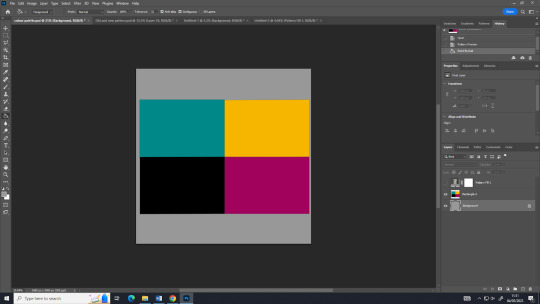





Here is another pattern I had a go at creating. I took the shape from the collage I created and then I just took it into photoshop and played around with it.
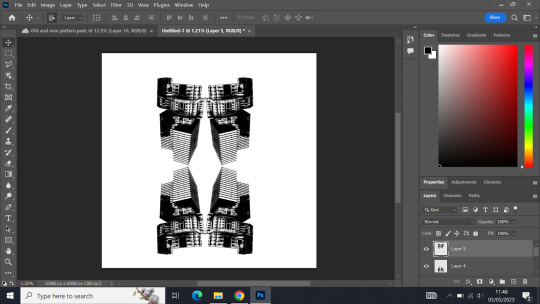




I put the pattern through pattern preview so I can get a feel of how it would actually look like and I really liked it. The last pattern on the right is a half drop repeat pattern and I actually like it. I've also tried putting it onto a different background colour from my colour palette. I think it works really well the black and white pattern with the coloured background.


Here is the same pattern but just with different background colours. I like the yellow one a lot as it goes well together, the pattern and the colour are a good combination.
The patterns below


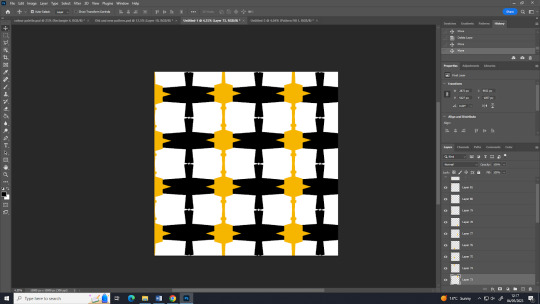
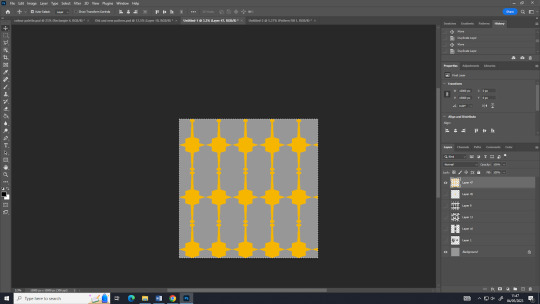

0 notes
Text
Andrei Birsan
Andrei Birsan meticulously took pictures of his friends throughout the ‘80s, one of the toughest decades for Romania. Some 30 years later, these photos are the collective portrait of a generation.
Two high school students are playing ping pong on the teacher’s table. Another one sits on the teacher’s chair and looks up to one of his colleagues who wants to crash a paper aeroplane onto his face. They are all laughing and wearing school uniforms, including ties. It’s the early ‘80s in Communist Romania.
The students are totally unaware of the boy who is behind his tiny Russian camera and takes a photo of them. The photographer is called Andrei Birsan. Without knowing, he is documenting the story of an entire generation. At 16, though, the pictures are just for fun. He loves his colleagues and the experiences they share. Photos are a means to hold those moments a little longer.
The negatives remain in boxes for decades. When Andrei turns 50, he decides to organise an exhibition with all the photos he took in the ‘80s. It’s his own birthday present.
“Some powerful images from a pretty powerful time”
Bored Panda picked up on his pictures and published a story titled “My Life As A Child, Teen And Student In The Communist Romania.” Black and white photos showing teenagers in Communist Romania, who were having fun and creating a sort of personal freedom in times of restriction.
I met Andrei on a rainy Sunday morning in Bucharest. Now 51, the man wears a large jacket and a chequered shirt. He holds in his hands a tiny, discreet Fuji camera.
Andrei has kept 280 film negatives of the photos he took in the ‘80s; that’s more than 8,000 photos. He started scanning them in 2006. “It’s not so much actually,” Andrei says. “I was not very consistent in taking pictures.”
He was in the 8th grade when his mother gave him a Smena camera as a Christmas present. The 14-year old boy started taking pictures of his colleagues in elementary school. He would soon become invisible to all his colleagues. He would take pictures during classes, and teachers and students alike would ignore him. Even as a very young photographer, he was very discreet and could easily blend in.
“It was a family album with my friends,” Andrei says about his old photos. “We were doing a lot of things together. Maybe because there was no Internet, no Facebook, we were hanging out together all the time, kite flying, going on trips.”
As kids, they weren’t really aware of the limitations of those times. The image of Romania in the ‘80s is synonymous with food shortages, long queues for the most basic products, censorship, winters without heating. The pictures of Andrei show a different story. Kids are laughing like crazy, teenagers are drinking, smoking.
That joyful experience of childhood and teenage years was possible only because parents were there to create a space where kids felt protected, Andrei explains.
Andrei’s book that gathers all these pictures has different levels. It’s the story of kids, the story of parents, the story of Bucharest, and indirectly, the story of those enjoying privileges in Communism.
Andrei became aware of the documentary side of his photos some years ago. Last year, when he turned 50, he decided to organise an exhibition in Bucharest with all the photos.
Reactions to the exhibition were amazing. It wasn’t only about Andrei Birsan and his friends. A whole generation could recognize itself in the pictures.
This year Andrei has put together all the photos in a book. He sent some copies of the book to his old colleagues, just like in high school, when he would print the photos and give them to his friends as gifts. It was really emotional for him, and for his old friends as well.
The Romanian teenager who documented the ‘80s in Communist Romania
28 September 2016
Andrei Birsan meticulously took pictures of his friends throughout the ‘80s, one of the toughest decades for Romania. Some 30 years later, these photos are the collective portrait of a generation.
Two high school students are playing ping pong on the teacher’s table. Another one sits on the teacher’s chair and looks up to one of his colleagues who wants to crash a paper aeroplane onto his face. They are all laughing and wearing school uniforms, including ties. It’s the early ‘80s in Communist Romania.
The students are totally unaware of the boy who is behind his tiny Russian camera and takes a photo of them. The photographer is called Andrei Birsan. Without knowing, he is documenting the story of an entire generation. At 16, though, the pictures are just for fun. He loves his colleagues and the experiences they share. Photos are a means to hold those moments a little longer.
The negatives remain in boxes for decades. When Andrei turns 50, he decides to organise an exhibition with all the photos he took in the ‘80s. It’s his own birthday present.
“Some powerful images from a pretty powerful time”
Bored Panda picked up on his pictures and published a story titled “My Life As A Child, Teen And Student In The Communist Romania.” Black and white photos showing teenagers in Communist Romania, who were having fun and creating a sort of personal freedom in times of restriction.

Andrei has kept 280 film negatives of the photos he took in the ‘80s; that’s more than 8,000 photos. He started scanning them in 2006. “It’s not so much actually,” Andrei says. “I was not very consistent in taking pictures.”
He was in the 8th grade when his mother gave him a Smena camera as a Christmas present. The 14-year old boy started taking pictures of his colleagues in elementary school. He would soon become invisible to all his colleagues. He would take pictures during classes, and teachers and students alike would ignore him. Even as a very young photographer, he was very discreet and could easily blend in.
“It was a family album with my friends,” Andrei says about his old photos. “We were doing a lot of things together. Maybe because there was no Internet, no Facebook, we were hanging out together all the time, kite flying, going on trips.”
As kids, they weren’t really aware of the limitations of those times. The image of Romania in the ‘80s is synonymous with food shortages, long queues for the most basic products, censorship, winters without heating. The pictures of Andrei show a different story. Kids are laughing like crazy, teenagers are drinking, smoking.

Andrei’s book that gathers all these pictures has different levels. It’s the story of kids, the story story of parents, the story of Bucharest, and indirectly, the story of those enjoying privileges in the Communism.
Andrei became aware of the documentary side of his photos some years ago. Last year, when he turned 50, he decided to organize an exhibition in Bucharest with all the photos.
Reactions to the exhibition were amazing. It wasn’t only about Andrei Birsan and his friends. A whole generation could recognize itself in the pictures.
This year Andrei has put together all the photos in a book. He sent some copies of the book to his old colleagues, just like in high school, when he would print the photos and give them to his friends as gifts. It was really emotional for him, and for his old friends as well.

“I remember how much fun we had even when we were doing patriotic work. I love the image with the teacher with the shovel in her hand and her bag on her arm. The pictures captured candid moments, but in a very precise way. They chronicle honestly, but are cleverly poignant. I don’t know how to explain that in Romanian, but they are some powerful images from a pretty powerful time.”
The Vigilant Woman
Andrei Birsan didn’t feel that his photography was subversive, not even when he photographed the demolitions that were cleaning up large parts of Bucharest.
By 1984, the old Uranus neighbourhood had been demolished and the construction of the Palace of the Parliament began. It is now estimated that between 20,000 and 100,000 people worked on the site. That year Andrei went to the Izvor area to take some pictures of the construction process. He was 19 and was beginning to notice the world around him.
A “vigilant” woman pointed to Andrei who was photographing the construction site. She screamed “Catch him!”. This caught the attention of a policeman who took Andrei to the man in charge of the construction site. The engineer proved nice. He told Andrei that he's not allowed to take pictures there, so he’ll have to remove the film from the camera. He returned the camera and told him: “Be cautious. A small thing can destroy your life.”
When the ‘89 Revolution started, Andrei was living in a small place with no TV. He was 24 then. On the morning of December 23 he took the subway and went to the city centre. He had his camera with him. There were shootings, but nobody knew who was being shot and who was the enemy. The students were then called to the University to defend it. Andrei, who was a student at Polytechnique, joined the other students. They were given guns and had to protect the empty classrooms. The students spent Christmas there. A girl had brought a fir tree, Andrei recalls. He knew that things were irreversible.
“It was a huge unchaining,” the 51-year old man recalls with tears in his eyes.
Andrei takes a sip of his espresso in a cafeteria in Bucharest. On a plate there are some apricot-flavoured cookies. In the transition years that followed, he worked in the banking sector, had a daughter, and set up an association called “My dear Bucharest”.
“How do the ‘80s seem to you? Are they still close or do they seem part of a distant past?”
“Oh, they are very far away,” Andrei says with a warm, sad smile.
Then he adds: “The ‘80s are still a recent memory for us. People still have memories about those years. That’s why it was important to publish the book now. Had I waited for another five years, maybe those times would have remained too far away”
***
Andrei Birsan will launch his book “The ‘80s” on Wednesday 28, at 6.30 pm, at the Bucharest Municipal Museum. The book is printed by the Bucharest Municipal Museum and opens a series of books called: The Time of the City.




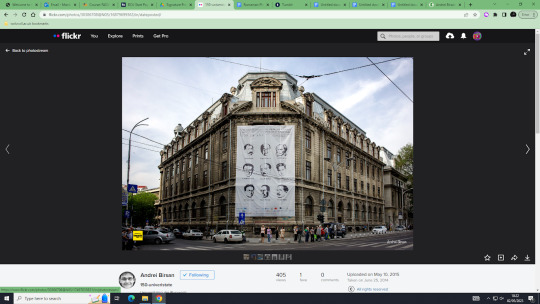
0 notes
Text
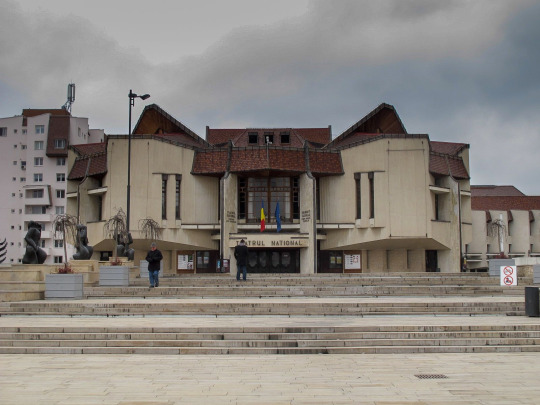



These are the typ of buidlings you'd find in the cities. Most of these are pretty old however they are very different to th countryside buildings I've shown in the previous post. You can clearly see the difference between each. However you can also see that they both have their unique beauty to them.


0 notes
Text
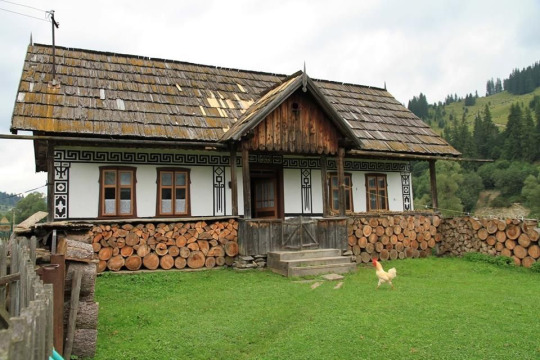


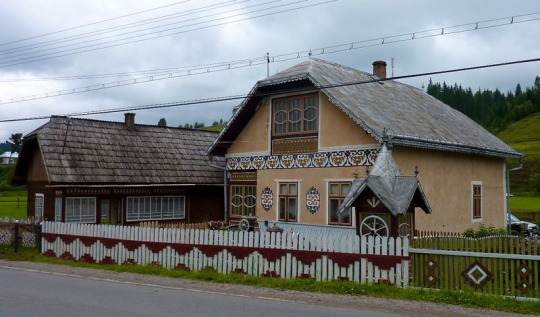
These are couple images of come countryside houses that there are in Romania even till this day. They are different in their own way, made of wood or clay, always nice and coloursful. Some of these house seen above could be as old as 100 years old or even older.
What I really like about these type of houses is the way they are made, the shapes, the designd on the houses or fence. They have thir own beuaty to it and thta's what makes these buildings so great.
0 notes
Text
Personal Brief
This is my project brief. The title for it is Old & New as it is about combining and showing the differnce between countryside and city architecture.
Old & New
The aim of my project is to show the difference and combine Romania’s city and countryside architecture together and create a range of surface patterns for wallpapers.
The reason I decided to go with this idea was because I really wanted to show how different city and countryside architecture actually is in my country. I want to combine the two and create a range of surface patterns that can potentially be used for wallpapers. As known Romania is located in Europe and so everything is very different from food to architecture, traditions and so on. Not only do I want to show the difference but the beauty of its styles as well.
I will be researching artists/designers/photographers that are related to architecture in any way possible. I’ll also be doing research on Romanian architecture, especially the countryside as they are very different to any house/buildings you would usually see. Also, researching into other artists/designers etc will help me get inspiration from their work and I can have a look at their way of working and their different techniques they use and maybe combine them with mine.
I will be mostly focusing on geometrical shapes from primary and secondary imagery and use them to create the patterns. I’ll be working in the print workshop (screen print/ sublimation) to create a range of samples that I can develop into the embroidery workshop as well as digitally onto photoshop where then I will actually start creating the patterns and experiment with it.
I decided to go with this idea as I really enjoy architecture in general. Seeing the different shapes of buildings and how each of them look really fascinates me and drags my attention more towards the idea that you can create anything from a cou0ple buildings and a couple shapes you put together.
I will be creating a range of digital finalised patterns taken from my research and samples from my print workshop.
0 notes
Text
This was the same pattern but I just tried experimenting by adding some colour into the background.

0 notes
Text
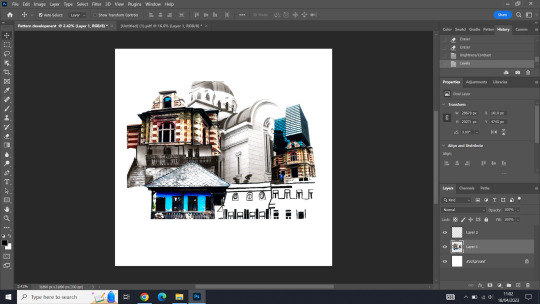
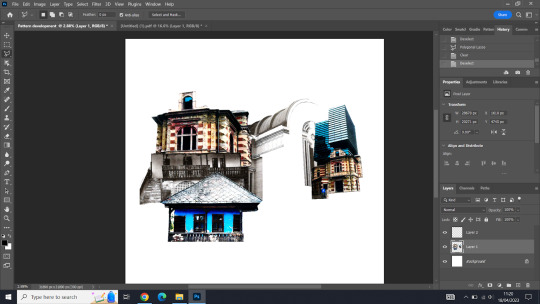





I like this one a bit more becuase I spent more on taking bits from it, trying different tools and effects to create a decent pattern that could possibly be used in my final board or maybe not. I really like how the black and white blend welltogether and how you can see th details of it even whn it is made a pattern. But personally I think I can develop this more and try making it into different types of patterns as well as experimenting with colour as well.
In this last image I actually started making almost like a repeat pattern to create the nice shapes.
0 notes
Text



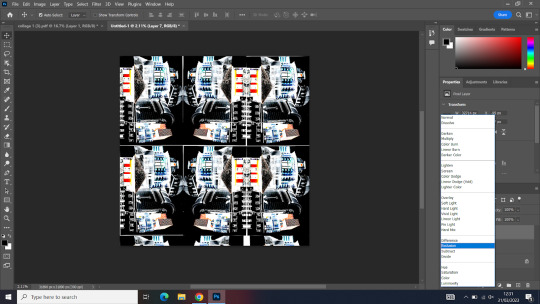

Here I started putting a collage together then I scanned it to myslef and put it through photoshop and started messing about with it, trying different tool and effects and creating a pattern. I suppose this is more of a practice one as I don't like it so much becuase I did not develop it enough to be good enough for a final pattern. However it did come out alright a little bit.
0 notes
Text
Wooden houses have always been built in Romania. Because the wood is "in sight" we tend to think that they are specific only to mountain areas. It's not like that! Even if it was not visible, the wood represented the resistance structure of the house. The adobe houses that were built in the plains, where wood was scarce and very precious (see Moromete's acacia), had wooden posts, beams, the floor of the house, the structure of the roof (asteriala). The fact that there is now a real wooden house industry in Romania is a natural consequence. Classic or modern, from round or square logs or from prefabricated walls, wooden houses have reached the most distant corners of Europe, Romanian builders being appreciated in countries with tradition such as Norway, Finland, France or Germany.

Wood, clay and stone were the building materials that the peasant relied on in the past. In the north, northwest or centre of the country, where there were impressive forests, wood was the basic raw material and houses were mostly built of wood. The insulation between the logs was made with clay and the foundation was made of stone. In the rest of the areas, where forests were rarer, wood was combined with clay and straw for walls. But they always kept some wood to beautify the house. Carved pillars, wooden embroidery on the eaves, arches with carved symbols that enriched the facades were added.
Traditional peasant houses
The main characteristic of old, traditional houses is functionality. The houses were simple, not big, just what they needed for everyday life. Each room existed for a specific purpose, it was not built unnecessarily, keeping a certain harmony of proportions. Each area imprinted certain particularities related to the existing means of construction and foreign influences. In Bucovina you can see the Austrian influence, just as in Dobrogea we will discover Tatar or Turkish influences.
There was, however, one element common to all the regions of the country - prispa, also called cerdac. It is one of the specific elements of Romanian rural architecture. We find it in all areas, more or less highlighted, on one side, on 3 or 4 sides of the house, simple, guarded only by wooden pillars or in the form of a balcony. Basically, the windowpane is what greets you when you enter a country house.
The prispa was built of clay or clay mixed with stone and always covered by eaves. In the southern area and in the plains it was lower, while in the high hilly areas, in the mountains or in the northern areas, it was higher. In wooden houses, the prispa (cerdacul) was sometimes covered with wood.
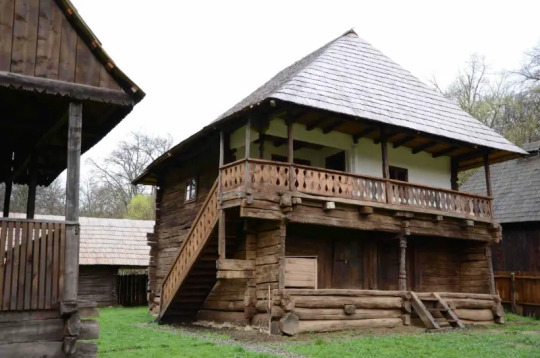
2 notes
·
View notes
Text
At the end I have decided to go with Romanian city and countryside architecture and combining them together.
0 notes
Text
FAS3003 Signature Project
This Signature Project is a hands free project where we can go and choose to do whatever we want. It was a bit difficult with choosing what I wanted to do at the beginning because as it's a hands free project there are many things we can do so it's harder to choose the right one.
0 notes
Text
Our Presentation
This is our final presentation that we are going to present in front our tutuors about PUNX which is our brand name. We all worked on the presentation together. We split it apart and we each had a slide or two to do. I was with customer slide whcih I think was alright to do but got lost a couple tikes when coming with the customers profiles but in the end it turned out alright. My group helped me with couple bits missing that we had to add. But everything else was alright with the presentation. We all went through it to see who will be doing what slide and just do a double check on the presentation to make sure it was complete to present.

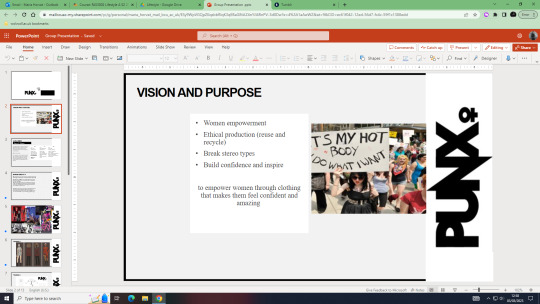



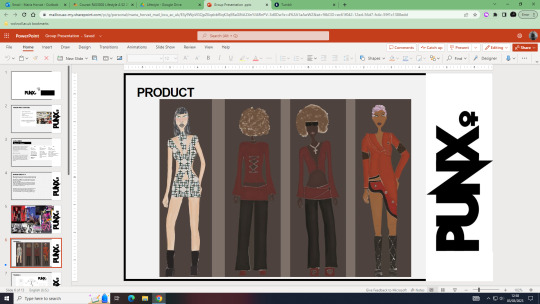

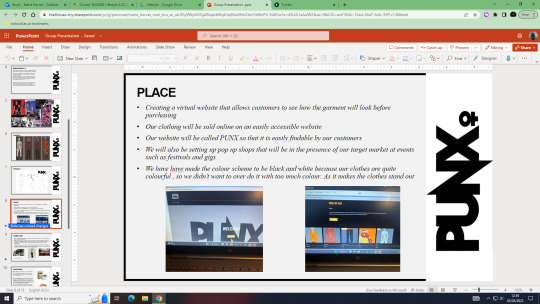




0 notes
Text




These are the complete illustrations that we added into our presentation which came out great. The group memebers did abgreat job into adding everything to them.
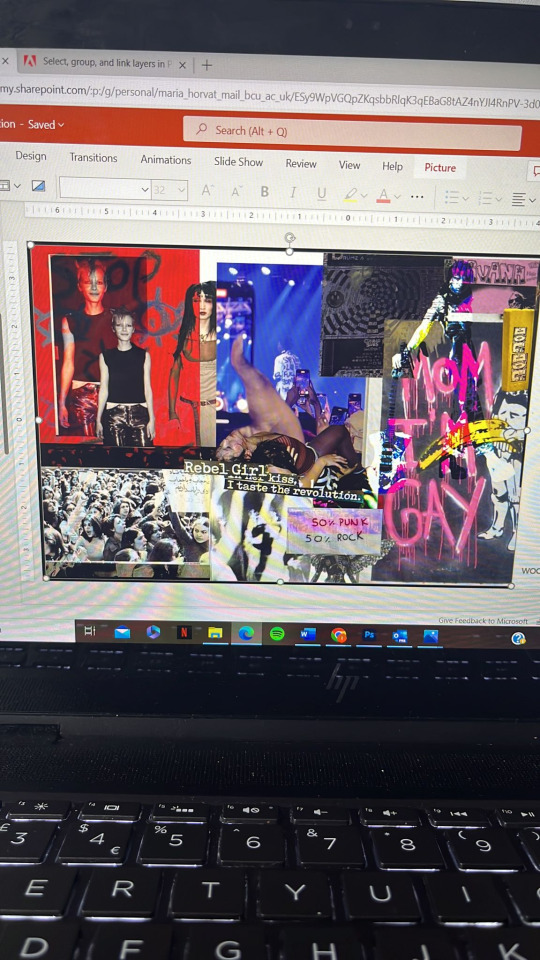


This was the website made for out brand. Which looks amazing. I think it gives the right vibe we went for, our vision and purpose are shown and explained as well very clearly.
0 notes
Text

This was a quick table on some fabrics one of us was looking at and the costs for each per metre.
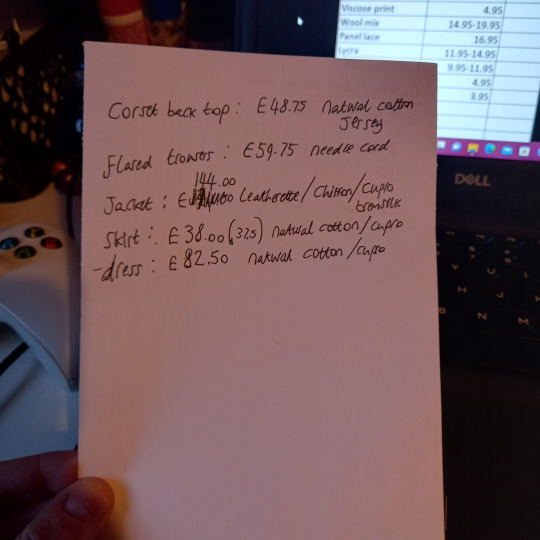
This was the calculations of prices of how much our garmets would come to.
0 notes
Text

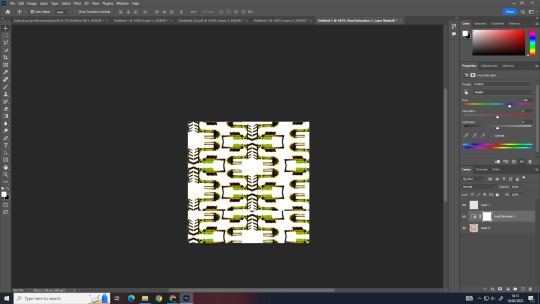
I then went ahead and just tried different colours and different things and see how it turnes out. This time I asked the help of my group member. I asked of her opinion and whast she thinks, what can be done better and then we just went ahead and played around to be honest.




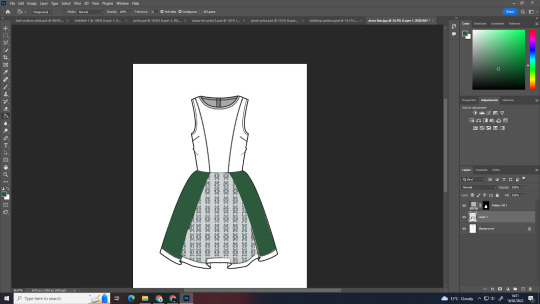


What I did next is I went and found some illustartions to use as examples so I can put my patterns on and see how the patterns would actually look on a garment. And my opinion is that it looke great. I really liked how the patterns looked on the trousers, it made them look so much better and not only that it gives it a really nice vibe that we was looking for. I could actually see these patterns on a garment, they would look great. The detail of it is amazing.
I also tried it on a dress as shown above and it looks beautiful. It makes the dress not look as simple and bor ing. It gives it a bit more excitment my opinion.
0 notes
Text
This is another one of my pattern made which also made the cut for the group.



In my opinion this was the best pattern made so far as it went great with our brand vibe and garments, the colours match perfectly, the geometry of it is really nice. I like how it all came together. This as well as the other patterns made was taken from a building part and then I went ahead and started experimenting with it.
I think the one thing I could have made better with probably all of them was make them clearer however some of tyhem settings were not working so well and photoshop was playing up a bit so I had to manage the way it was. However I tried my best to make it as decent as it can be and good enough for my patterns to be used in the garments created.


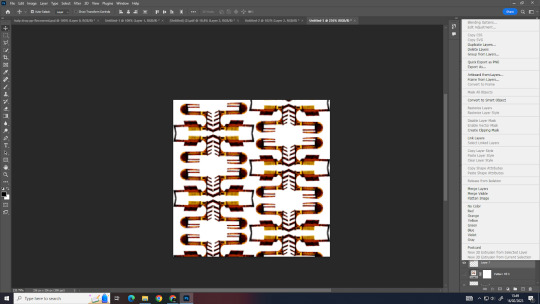
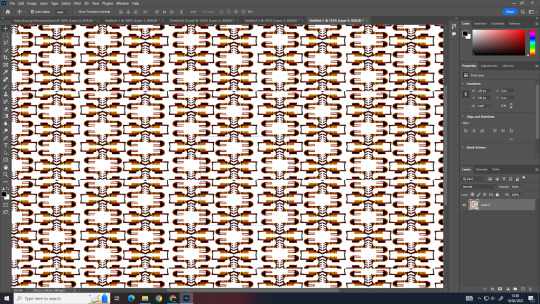
0 notes